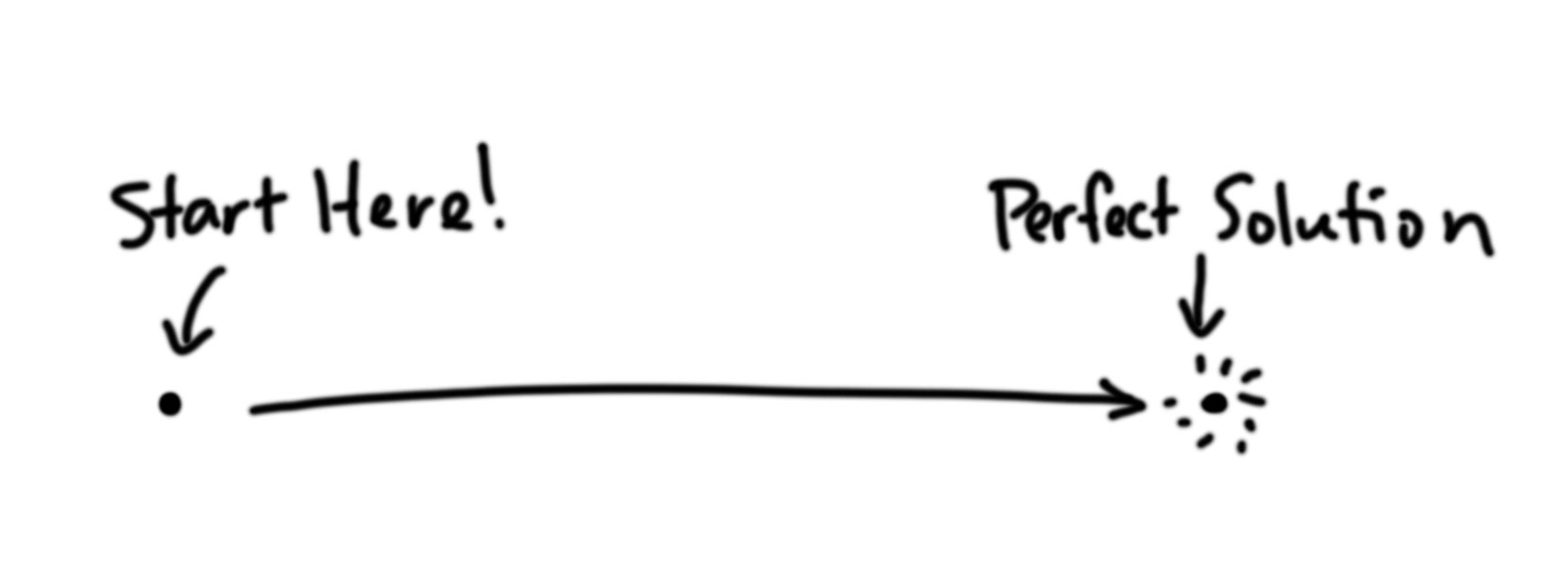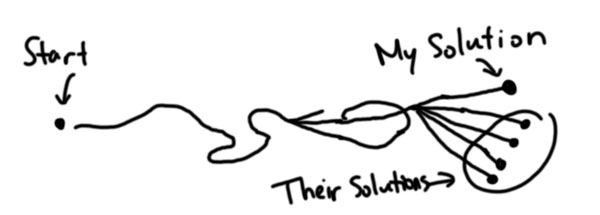Solving Toy Problems
Many Ways of Solving (Toy) Problems
There are many ways of solving toy problems. I think when starting to code, most beginners strive to reach the perfect, ‘right’ solution. They view each toy problem (since we all start with and love toy problems) as being uni-directional similar to a footrace.
This post talks more in the perspective of a ‘just-starting’ coder.
Toy Problems Represented
Most beginners view toy problems like this:

I think many coders wish it were this simple, myself included. We could then build up our skills in a linear fashion and become masters someday.
However, this isn’t the reality. There are many solutions to the same one. Granted, some solutions may be more optimal, more readable, more whatever, but there are always tradeoffs involved.
This is more inline with reality:

What is represented here?
- There isn’t a single path.
- You may need to backtrack and undo/redo work.
- Your solution won’t be the only one.
Other things that I didn’t represent in this diagram:
- Your solution may be less/more readable to a human
- The path to solving problems will be different each time
- Your path will start shifting to become more like the single-line diagram
My main takeaways are to shift expectations from this linear path, not to seek too heavily a ‘perfect’ solution because there isn’t one, and to encourage the growth mindset.
But let’s not keep this at an overly high-level discussion. I’ll leave you with a simple toy problem code example.
A Simple Code Example
// Determine if a number is odd.
// -----------------------------
var num = 5;
// EXAMPLE 1
var leftover;
while (num > 1) {
num = num - 2;
}
if (leftover === 1) { return true }
if (leftover === 0) { return false }
// EXAMPLE 2
num = 5;
return num % 2 === 1;
Now, I understand this example may be a bit contrived or too simple, but I want to point out that for someone beginning JavaScript, Example 1 is perfectly fine. There are tradeoffs for Example 1 such as more lines of code, more memory space, etc. However, you could equally argue that Example 2 is less understandable and harder to read for a beginner. Time and experience will make most coders understand something like Example 2 to be superior, but being able to weigh the pros and cons are important.